We recently published a post about how to use heat tape for your RV water hose to keep it from freezing, as we’ve done ourselves with excellent results. But many RVers aren’t the DIY type and would prefer to buy a ready-made, professionally finished product. So, today we’re taking a look at three of the best heated RV water hose options available… just in time for cold weather.
What is a Heated RV Water Hose?
A heated RV water hose uses electricity to heat the entire length of the hose in order to keep the hose above the freezing point so that water can travel through it while you’re camped in cold climates. In order to achieve this, most heated water hoses use a heating element, a thermostat, and often some insulation.
If you were to use your regular RV water hose in temperatures that fall below freezing, the water in the hose would freeze, the hose would probably burst, and you’d not only have no water coming into your RV, but you’d have a mess to contend with as well.
There are some RV parks where temps regularly fall below freezing that require RVers to have heated water hoses for this very reason.
Do I Need a Heated Water Hose for My RV?
That depends. If you’re an RVer who travels to – and remains in – warm climates during the winter, or if you winterize and store your RV and have no intention of using it during the winter months, then you can cross “RV heated water hose” off your list of important items to carry.
However, if you intend to camp for any length of time in areas where temperatures regularly fall below freezing, and you intend to be connected to a city water source during this time, a heated water hose can be important.
Alternatively, you can insulate your water hose sufficiently to keep the line from freezing. Again, here’s a link to our post on using heat tape for your RV water hose.
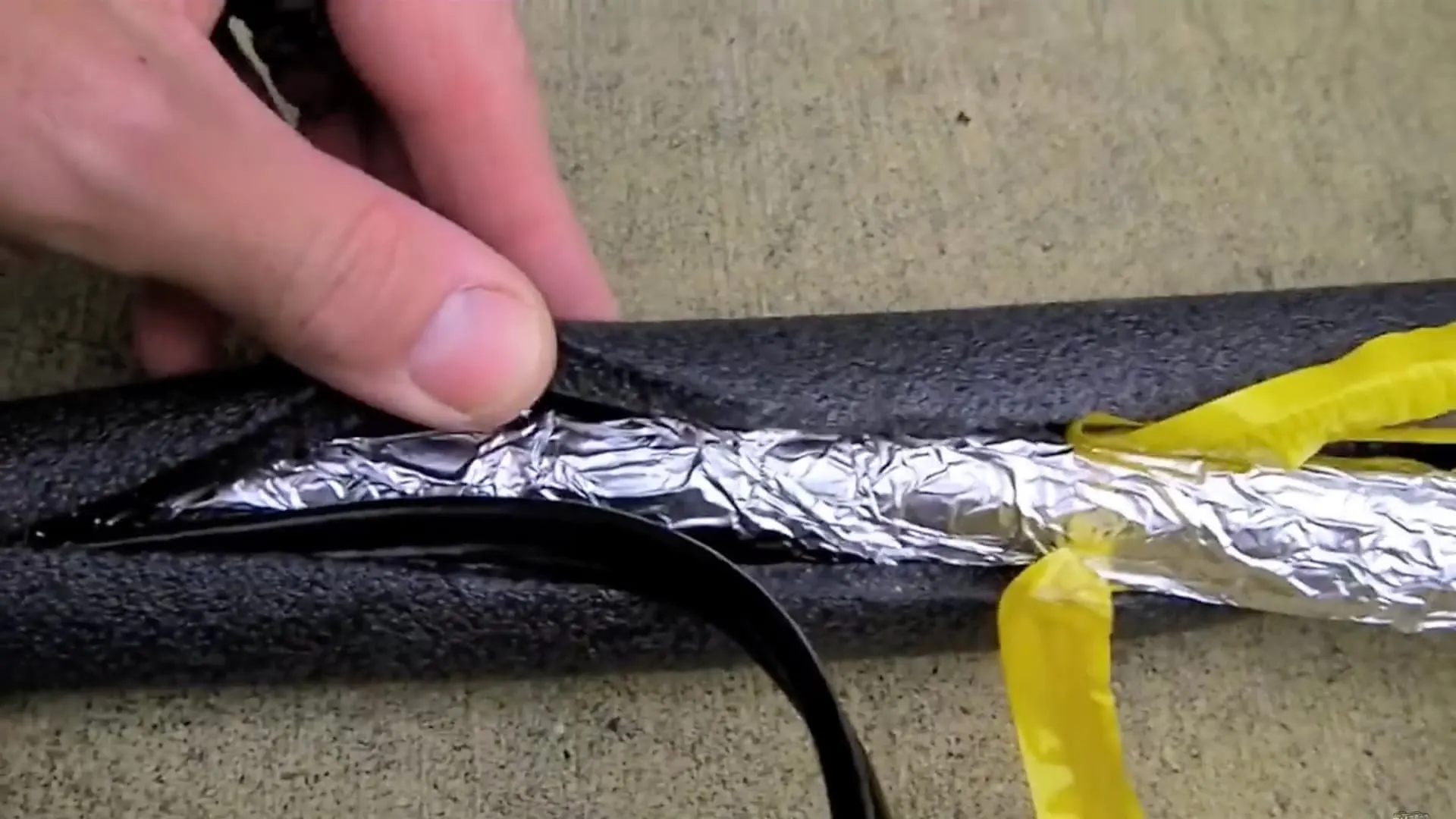
The DIY heated RV water hose works well, but may not be sufficiently protective if you’re camping in sub-zero temps.
Important Note: When we created our DIY heated water hose, we weren’t wintering in a location where temps would drop below freezing for any lengthy duration. The DIY hose works well, but it may not protect you from temps significantly below freezing. If you plan to winter in very cold temps, a commercially-available heated RV water hose will likely suit you better.
Also, if you’re only planning to spend a short amount of time in very cold weather, you can just leave your fresh water hose stored (i.e. not connected to the city water supply) and run off the water in your tank. When that runs low, re-connect to city water and refill your tank (preferably during the warmest part of the day ????????), then put the hose away again. In this way, you avoid the issue of your fresh water hose freezing at all.
What to Look For When Shopping for a Heated RV Water Hose
There are a few considerations to keep in mind when shopping for a heated RV water hose. Let’s take a brief look at those, and then we’ll share with you our top three choices for commercial heated water hoses for RVers.
Hose Material
First, of course, is the material from which the hose is constructed.
There are some heated water hoses on the market that aren’t approved to carry your drinking water. You’ll want to make sure that you’re purchasing a hose made with materials approved for safe drinking water standards.
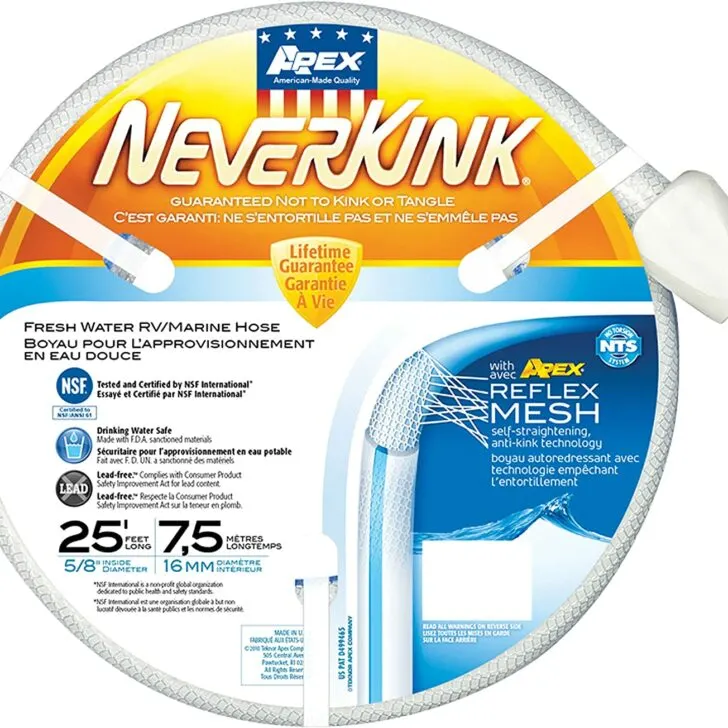
Whether it’s a heated RV water hose or not, be sure it’s safe for drinking water.
And frankly, even if you don’t intend to drink the water but only shower, cook, and wash dishes with it, an approved drinking water hose is best for RV use.
Hose Length, Diameter, and Connections
You’ll also want to note the length of any heated RV water hose you’re considering.
If you know you’ll be relatively close to your water source, then there’s no reason for you to carry around a 50-foot hose that’ll also be more expensive to buy. But if you’re unsure of the length of hose you’ll need, be sure to buy a length of hose that will suffice even if your water inlet is more than 25’ away from your city water source.
Also, heated water hoses come in ½” and ⅝” diameters (greater diameter means higher flow rate), so note the diameter offered by the products you’re considering.
Some heated RV water hoses offer a female connector on both ends of the hose and provide an adapter to use on what will be your male end. This allows you to use either end of the hose as necessary. Always keep in mind, however, that any adapter invites a leak, so you’ll want to make sure you have a good tight connection to the adapter.
If the hose will be fully exposed outdoors, you may also wish to wrap the connectors and adapter with heat tape or additional insulation for reassurance.
Temperature Rating
All heated RV water hoses are temperature rated. Some hoses are rated to -20 degrees Fahrenheit, while others are rated to -40° F.
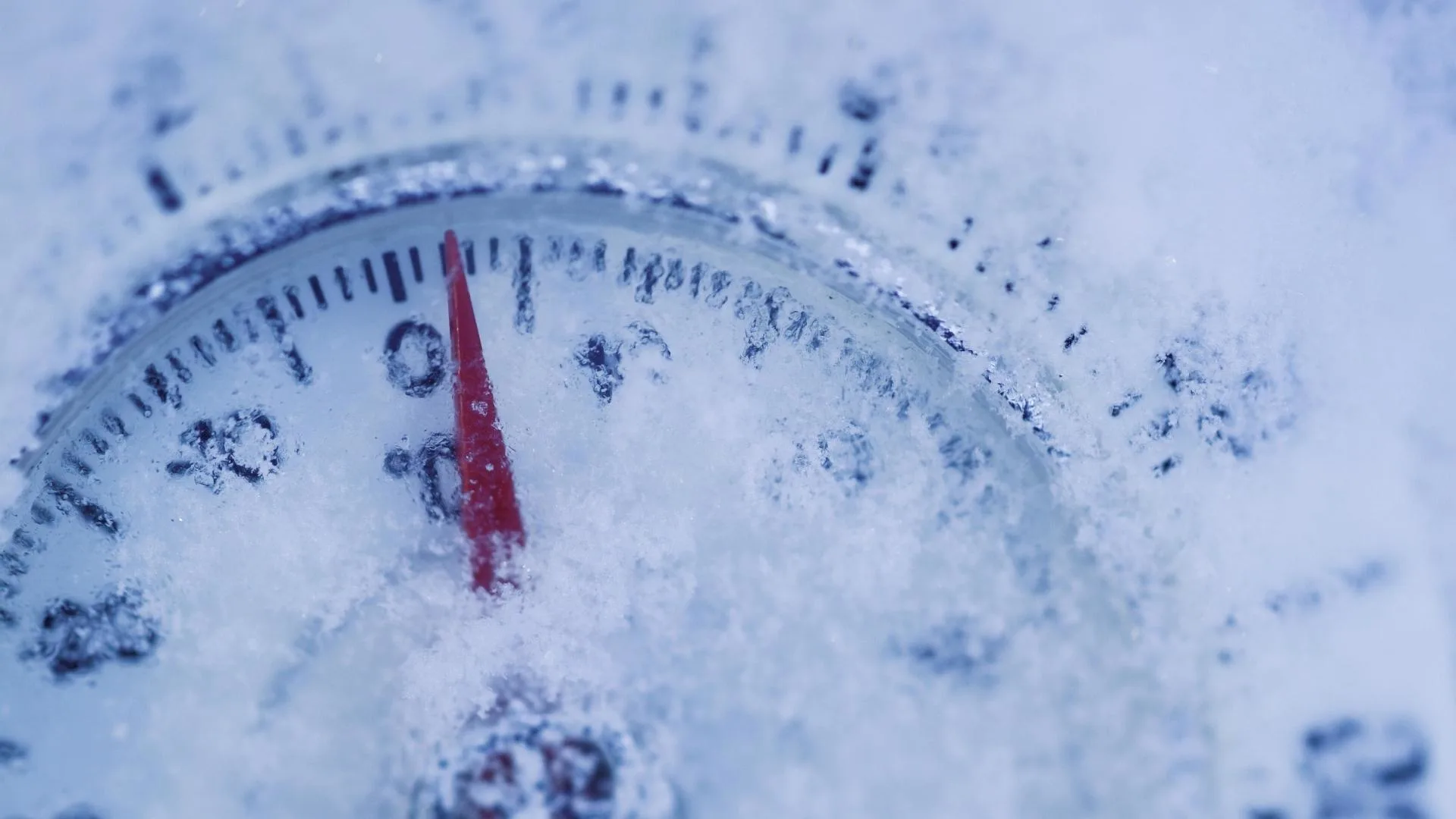
Be sure the rating for your heated RV water hose is sufficient for the temperatures you expect to experience when winter RVing.
Be sure to look for the manufacturer’s temperature rating to make sure it complies with the temps in which you’ll be camping.
Temperature Control
A temperature control feature could be quite important depending on your intended mode and duration of winter camping.
Temperature control adjusts the power supplied to the hose automatically according to ambient temperature. So, if you have a warmer day during which temps don’t fall below freezing, for example, your hose won’t draw power unnecessarily.
Similarly, if temps drop below freezing, power to your hose will adjust automatically to the lower temps by raising the temperature of the hose as needed.
This is a great feature because, in theory, it takes over the job of monitoring outside temperatures for you. We say “in theory” because depending on the hose you purchase, it may not offer this feature or, if it does, the feature may not work as well as it should (this is where reading reviews is helpful).
Temperature control can come in the form of a thermostat or in the form of self-regulation (meaning the hose will activate the heating element based on ambient temperatures).
Power Draw
And finally, depending on your situation, it may be important to take a look at the energy drawn by the hose you’re interested in purchasing. Here’s why:
A heated RV water hose requires access to 120V (AC) power. As long as you’re hooked up to shore power, you should be able to power your hose without any issue.
However, if you’re NOT connected to shore power or you lose power at your shore connection, you’ll have to consider your ability to run a heated water hose on your rig’s power supply.
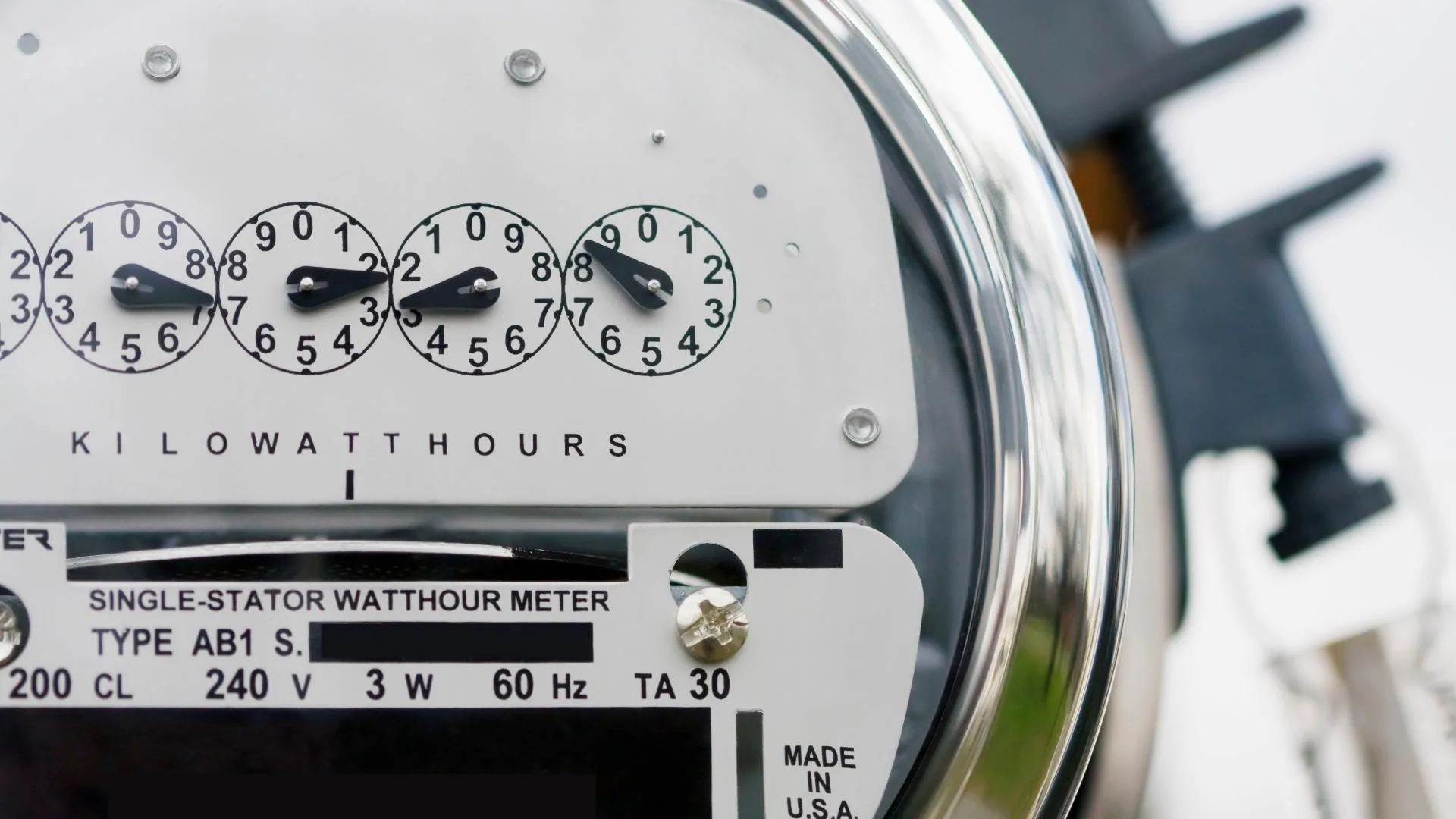
Be sure you know the rated power draw of your heated RV water hose.
For this reason, you may want to know that a heated RV water hose generally draws around 8 Watts per foot of hose. So, if you have a 25-foot heated water hose, that’s 8 Watts x 25 feet of hose which is 200 Watts of power (your inverter will draw some power as well, as will anything else you’re running in the rig, of course).
You could also use the water from your fresh water tank while it lasts, but again – all of this will depend on where you’re camping and for how long, and whether you have adequately insulated your rig from the cold in other ways. For more on that, check out our tips for winter RVing.
With all of the above in mind, here are our three top choices for the best heated RV water hoses that are commercially available.
3 Best Heated RV Water Hose Options
You may be wondering why we’ve only got three choices on our list. Anyone who has followed us for any amount of time knows that we don’t like to appear to be recommending any item that either we don’t use and love ourselves, or that we thoroughly research and recommend on the basis of the quality of the item and the experiences others have had widely with the product.
In the case of heated RV water hoses, we have one favorite, another that we haven’t used but that we know to have been a highly successful product for many other RVers, and a third option which is overall a decent product but has some downfalls we’ll point out honestly.
Here, in order (our top choice being #1), are the only three heated water hoses we feel comfortable highlighting at this time. If you’ve had great success over time with any other hose, feel free to let us all know in the comments section below.
NoFreezeWaterHose
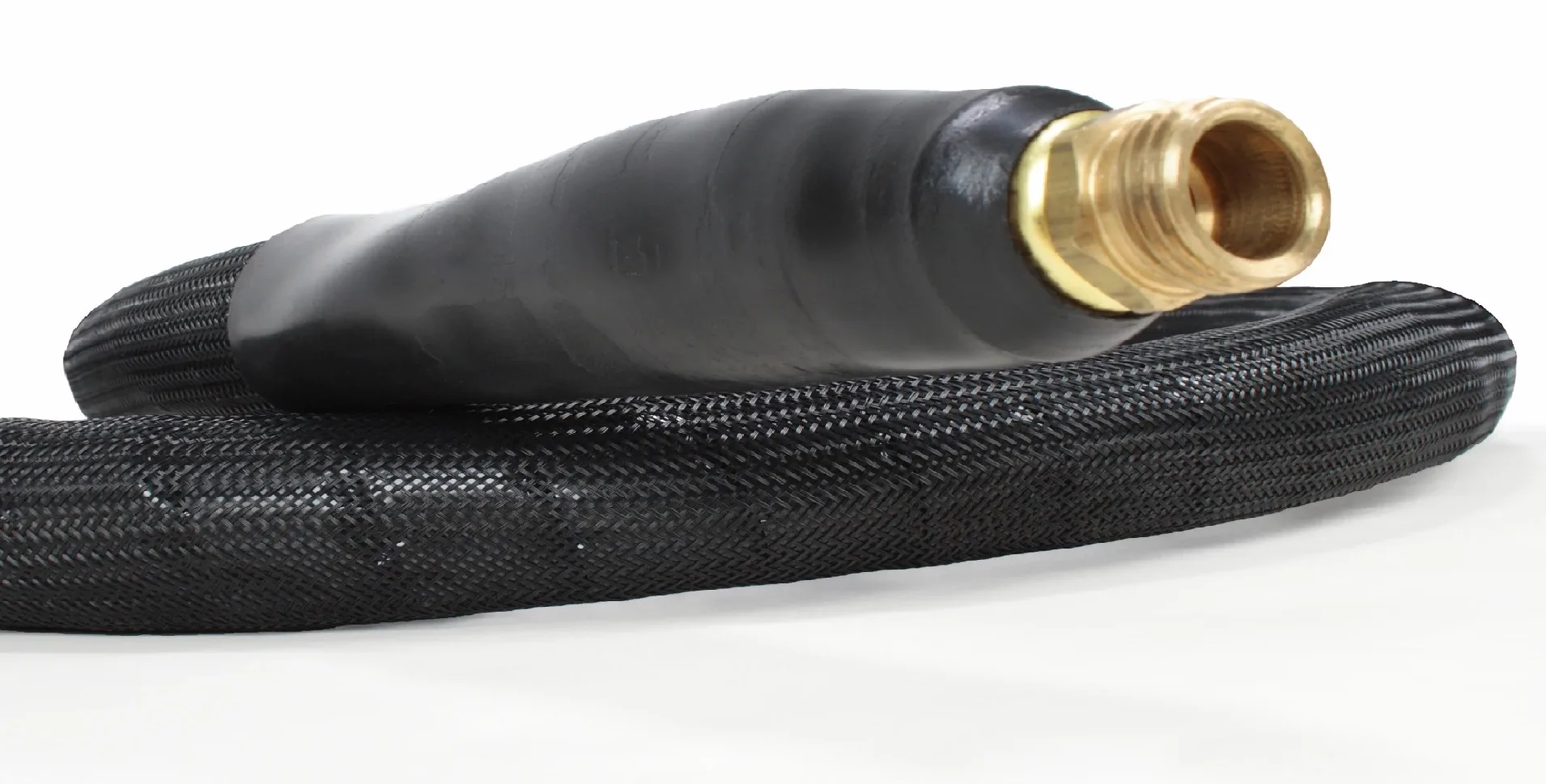
The NoFreezeWaterHose is the highest quality hose we’ve found, but it’s also the most expensive option of the three. But if you want to set it and forget it, and if you plan on RVing in extremely cold temperatures, this is the hose for you.
Available in a wide array of lengths and made in the USA (Columbus, Ohio) by a family-owned and operated manufacturer, these heated water hoses are designed and constructed with superior quality and military strength. These are really the only good choice we know of for folks who winter in extremely cold climates, as they’ve proven to perform effectively at -30 degrees Fahrenheit.
The core of the NoFreezeWaterHose is a flexible, non-contaminating food-grade hose that’s perfect for an RV fresh water hose application. The fittings are made of forged brass, making them unlikely to leak or bind.
The heating element for NoFreezeWaterHose is self-regulated through the entire length of the hose, which is very different from most hoses that have a thermostat for temperature control. This is also the only hose with a waterproof thermal foam seal. The manufacturer states that its hoses “will not burn, break, freeze, leak, burst, underperform or short out”, and it backs its claims with a willingness to double the warranty of any other heated water hose manufacturer.
You can order the hose with an additional pigtail of heating element at either (or both) end(s). When setting up your NoFreezeWaterHose, you can wrap the pigtail around the faucet/spigot connection and/or the connection on your RV’s sidewall to ensure that they’re protected from freezing, too. A nice additional feature that other hoses don’t offer.
These fully-insulated hoses are energy-efficiency with a power draw of 1.5A per 25’ of hose, (that’s 180 Watts at 120V). NoFreezeWaterHose recommends connecting it to a GFCI-protected outlet to ensure safety.
Additional technical specs can be found here.
NoFreezeWaterHose hoses are manufactured to meet the demands of industrial use (their heated hoses are used on the Alaskan Pipeline, for example), and they’re highly unlikely to fail you, even in extreme temps.
Once again we’ll acknowledge that these hoses are expensive, but here you really do get what you pay for, and IF you’re a person who camps for long periods in extreme winter temperatures, this hose is your peace of mind. Follow the manufacturer’s instructions to hook it up, and forget about it.
We reached out to NoFreezeWaterHose and they’ve been kind enough to respond with a coupon for RVgeeks readers to save 5% on their purchase:
Camco 25ft TastePure Heated Drinking Water Hose
For those of you with an occasional need for a heated RV water hose, or for those in more temperate winter climates where temps may reach freezing or below now and then, the Camco TastePure is a far less expensive alternative if you don’t need serious deep-freeze protection.
This hose has overwhelmingly good reviews from experienced users and good features for the price. Made with ⅝” diameter NSF-61 certified drinking water safe hose (lead and BPA-free), the Camco TastePure hose allows you to connect to your water supply using either end of the hose (depending on the location of your electrical outlet), and Camco provides a female-to-male adapter for this purpose.
Camco states that these hoses operate on 120V AC electricity and should always be used with a GFCI protected outlet.
The 25’ hose is rated to -20 degrees Fahrenheit, but Camco also makes the TastePure Heated Drinking Water Hose with freeze protection to -40 degrees F – we’ll post links to both below.
The hose rated to -20 degrees F has a thermostat which you’ll want to be sure is positioned away from any possible heat source, as it will respond to that temperature instead of the ambient temp.
The hose rated to -40 degrees F has a self-regulating heating cable (much like the NoFreezeWaterHose above).
Both products operate on 120V AC and have very durable outer jackets that offer exposure and damage protection to the water hose and electrical components.
Both versions of the Camco TastePure heated RV water hoses (rated to -20 and rated to -40) are available in 12’, 25’, and 50’ lengths (all ⅝” diameter).
We’ll note here that while the Camco TastePure fares best of the heated RV water hoses Amazon has to offer, about 10% of reviewers were dissatisfied with their purchase, mostly due to leaking or the hose failing in a short period of time.
Rated to -20 F:
Rated to -40 F:
- Provides Freeze Protection: Self-regulating heating cable is ideal for water line freeze protection down to -40° F/C; Hose Length: Hose measures...
- Includes an Energy-Saving Thermostat: Thermostat only heats as needed, saving money on your electric bill
Valterra 25ft Heated Fresh Water Hose
Valterra’s ½” heated fresh water hose comes in second in terms of reviews from Amazon buyers (but stay tuned for a few details on those reviews, please).
The Valterra hose uses self-regulation rather than a thermostat to automatically control heat output, but it appears from reviews that there may be some improvements that could be made here. It operates on 120V AC electricity and is available in three lengths – 15’, 25’, and 50’, all of which are the narrower (slightly lower flow-rate) ½” diameter.
Our problem with this hose is that while it offers some decent features at a fairly low price, nearly 20% of reviewers complain that the hose doesn’t hold up or doesn’t perform adequately. That said, this hose has performed to 5-star ratings for 70% of Amazon reviewers, and that’s certainly worth something (and the trouble with reviews is that we usually can’t account for user error or a user who hasn’t followed manufacturers recommendations while using the product).
Some Valterra hose owners note that wrapping the hose in foam pipe insulation is helpful.
All-in-all, the Valterra hose has worked well for a majority of winter campers, and it could work well for you, too – depending on how and where you camp, and the temperatures in those locations. But since it’s actually more expensive than the Camco hose, but has more mixed reviews, we think you’d be better off with a different choice.
- HEATED RV WATER HOSE: 1/2" diameter hose provides smooth flowing drinking water in sub-zero temperatures
- EASY OPERATION: Freeze protection down to -5°F, Self-regulating design eliminates the need for a thermostat and saves power
(BONUS DIY OPTION) Make Your Own Heated RV Water Hose
A fourth option and one which we thoroughly discuss in this post is the option we used when we were winter camping in snow and below-freezing temperatures, and that’s the option of making your own heated RV water hose using heat tape.
If you’ve got some time and a little bit of patience and don’t mind a DIY project (or love them as we do), and especially if you rarely travel in sub-freezing temperatures (as we do), this may be the perfect heated water hose for you. Check out our post to see if maybe this is the way you’d like to go.
Should I Use a Pressure Regulator With My Heated RV Water Hose?
You absolutely should use a pressure regulator with your heated RV water hose. In fact, you should use a pressure regulator anytime you’re connected to an outside water source (like a city water hookup at a campground).
The reason for this is that our RV plumbing has less structural integrity than plumbing you’d find in a building. RV plumbing can’t sustain the kind of pressure many (if not most) city water supplies put out. Therefore, it’s necessary to regulate the amount of pressure that comes into your RV from an external water source. Otherwise, the excessive pressure from the outside water supply could burst your RV’s pipes and cause a very big and very expensive headache for you.
Just be sure that you properly protect the pressure regulator from freezing, or you won’t have any supply of fresh water even though the hose is being heated.
Can I Use a Filter With My Heated RV Water Hose?
You can certainly use your indoor, permanently-installed water filter with your heated RV water hose, however, the external filters that sit between your heated water hose and your rig’s potable water inlet are a different matter.
Depending on how cold it is where you’re located, an external filter like this one may very well freeze and need to be removed. This may NOT be a problem except in sustained sub-freezing temperatures, but you should be aware that it’s a distinct possibility.
Many users have wrapped their external filters with pipe insulation, but depending on their locations and the temps, the filters have frozen anyway.
Other folks have had no problem with a wrapped external filter, but your experience is likely to depend entirely on where you’re camping and the ambient temperatures there. So be sure to plan accordingly… or install your inline water filter inside your RV’s water bay to keep it warm.
Geek Out with Us Every Week
Join our newsletter to learn about all things RV-related. Every week we offer free tips, tricks, product reviews, and more to our online community of RVers. So, whether this is your first time on the road or you’re a seasoned expert, we’d love for you to geek out with us!


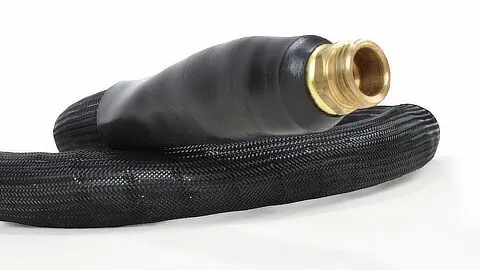



Michael W.
Sunday 19th of November 2023
Good article. Very helpful. We used your discount code and bought the nofreezewaterhose. We are hopeful this hose works for our tiny house located at 10,000’ feet elevation in Colorado. The nofreezewaterhose is much more expensive than the other options, but if it works for a few winters it is money very well spent. We have tried a plethora of the “other” heated water hoses…..some mentioned in your article. All leaked or stopped heating in a few months.
TheRVgeeks
Monday 20th of November 2023
Agreed, Michael... the NoFreezeWaterHose certainly isn't the cheapest option available. But, as is the saying goes, sometimes you get what you pay for. Sorry to hear the other options you tried didn't last. But we're very confident that the new NoFreeze hose will work wonders for you. We love our NoFreeze hose... it's amazingly well built and robust.
John Schretlen
Sunday 19th of December 2021
I first saw that NoFreezeWaterHose in a Morton's on the Move movie and it looks impressive. I can understand what that's your #1 recommendation.
I know you do not spent too many winters in BC but, if you decide to winter in cold areas, do you still use your homemade heated hose or have you invested in one of your suggestions?
TheRVgeeks
Monday 20th of December 2021
Hi John. We were PLANNING to use our homemade heated hose this year, but instead decided it was time for the NoFreeze. So we'll be using that when we get back to BC in the New Year.
Gary McElroy
Sunday 12th of December 2021
For me, your Amazon link on the two Camco hoses results in, "Sorry we couldn't find that page."
TheRVgeeks
Sunday 12th of December 2021
Thanks so much for the heads up, Gary! If you try reloading the page, we think we've got 'em fixed.